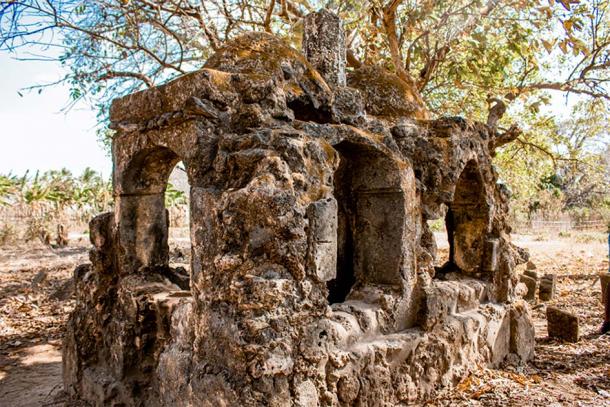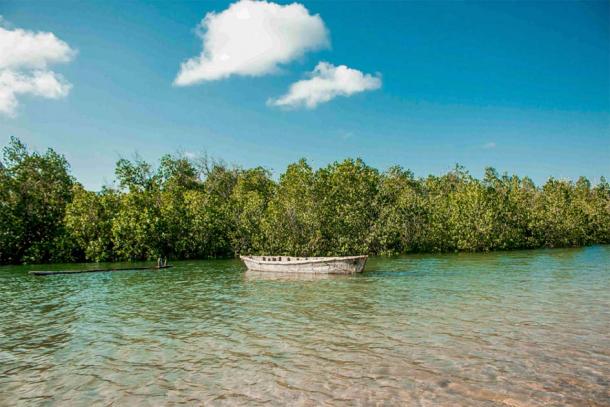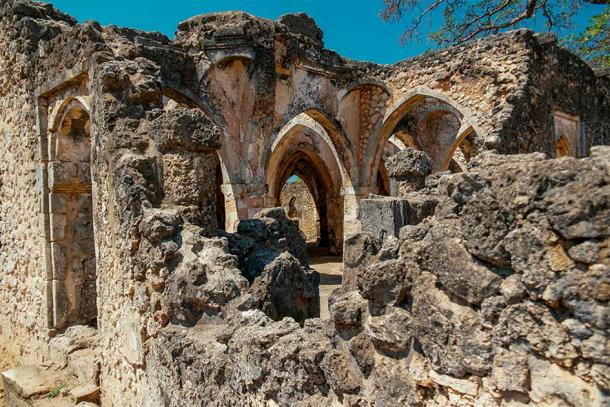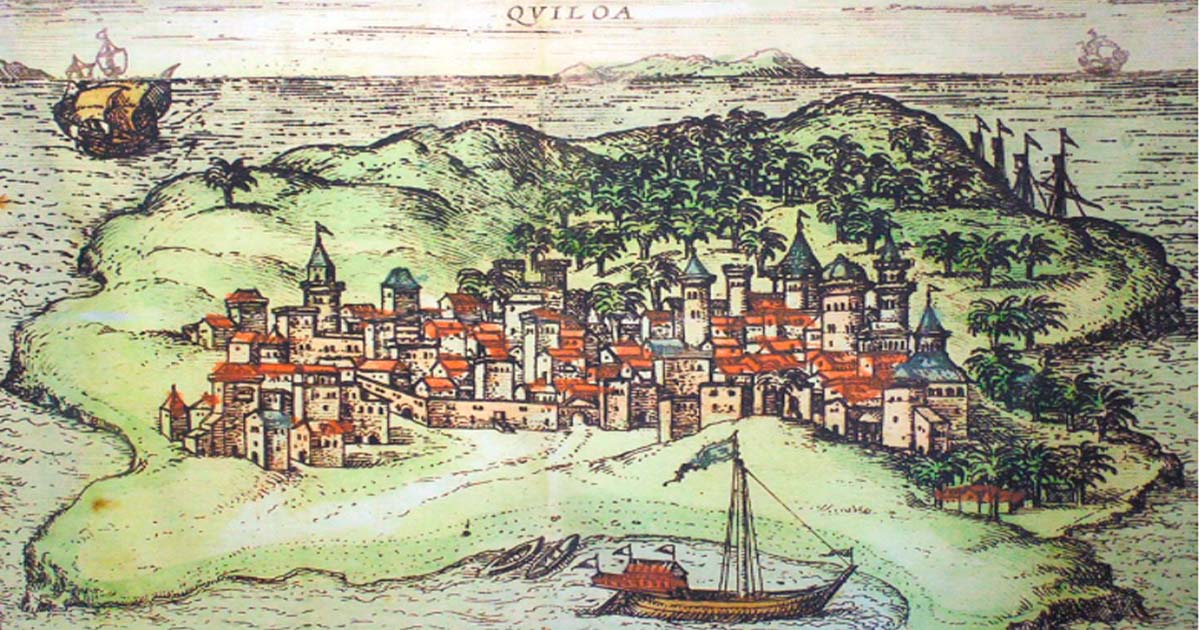The Kilwa Sultanate: The Island State That Dominated Medieval East Africa
The Kilwa Sultanate was a powerful and prosperous city-state that once dominated the Swahili coast of East Africa. For centuries, this kingdom thrived as a hub of international trade, connecting the African continent to the wider Indian Ocean world. Its rise to power was marked by strategic alliances, skilled diplomacy and a thriving economy, while its downfall was shaped by a combination of internal conflicts, external pressures and changing global trade patterns. This is the story of the Kilwa Sultanate’s rich history; How it began, how it ended and what made it so special.
The Legendary Beginnings of the Kilwa Sultanate
The origins of the Kilwa Sultanate are steeped in mythology. It was said that Kilwa’s founder was Ali ibn al-Hassan Shirazi and that his founding of Kilwa was down to family drama. Shirazi was said to be one of the seven sons of the Emir Al-Hassan of Shiraz, Persia, and an Abyssinian slave. As the legend goes, when Shirazi’s father died, Shirazi was driven from his home, and his inheritance, by his six brothers.
- Will Ancient African Coin Found in Australia 'Change Everything'?
- Ancient DNA is Restoring the Origin Story of the Swahili People of the East African Coast
Shirazi packed up his household and with a small group of followers set sail out of Hormuz for Mogadishu, the richest city on the South African coast at the time. Unfortunately, not long after arriving, Shirazi fell afoul of the city’s Somali elite and found himself driven out of this city as well.
Shirazi decided it was best to try settling on his own land, rather than relying on the hospitality of others. He sailed down the African coast and was said to have bought the island of Kilwa from the local Bantu people, a group of over 400 distinct ethnic groups who all spoke the same language.
One version of the legend says that the island was owned by a Bantu king on the mainland and that it was connected to the mainland by a land bridge. This king at first agreed to sell Shirazi the island in exchange for a great amount of fine cloth. He then promptly changed his mind. This came too late however, as Shirazi had already destroyed the land bridge, turning Kilwa into a true island.
In reality, it is believed that much of this legendary history was made up to legitimize Kilwa’s ruling dynasty by tying it to Islam. Shirazi being from both a noble Islamic family, and the son of an Abyssinian slave (Ethiopian), helped explain why the island’s rulers were both black and of royal Islamic descent. The inclusion of the narrative surrounding the sale of exquisite fabric significantly elevated Shirazi's image, exuding an air of sophistication and refinement.

An ancient grave of one of the rulers of the Kilwa Sultanate. (Baxito / CC BY-SA 4.0)
The Rise and Reach of the Kilwa Sultanate: A Trade Success Story on the Swahili Coast
Whatever the truth behind its founding, the Kilwa Sultanate rapidly grew in both wealth and power. Its ideal location meant it was a much better trade center than Mogadishu or any of the other major ports or towns along the Swahili coast. Many wealthy merchants and immigrants from further north, like Persia and Arabia began flocking to the island. It grew quickly and was soon able to establish a satellite settlement at Mafia Island.
Unsurprisingly, with this success came conflict, especially with Mogadishu. The two powerful trade cities began vying for dominance over the Swahili Coast. During the 12th century, Kilwa’s 12th ruler, Suleiman Hassan, took the immensely prosperous city of Sofala from the Mogadishans.
Sofala was a wealthy city in its own right, made rich through its trade of gold and ivory with Great Zimbabwe and Monomotapa. The taking of Sofala meant a massive influx of gold for the Kilwa Sultans, which they used to expand their powers and territories along the East African coast.
Kilwa’s power peaked during the 15th century. By this point, the Kilwa Sultanate had claimed overlordship of several important mainland cities including Sofala, Malindi and Inhambane. On top of this, they had also claimed the island states of Mombasa, Pemba, Zanzibar, Mafia, Comoro and Mozambique. Most of the trade-rich Swahili coast was now under their sway.
Kilwa’s expansion had its limits, however. The sultanate’s power was kept in check by two powerful independent states to the north: The Somali city-state of Barawa (a self-ruling republic) and what was left of Mogadishu. Heading southwards, the Kilwa Sultanate’s power stretched as far as Cape Correntes.
This isn’t to say the Kilwa Sultanate had created an empire. Its territories were more like a confederation of commercial cities. Each of these had its own internal ruling elite, merchant communities and trade routes.
These cities often reported to a governor or overseer appointed by the Kilwa Sultan, but the power of these governors varied. In Mozambique’s case, the governor ruled in the Sultan’s name, for example. In contrast, perhaps due to its great wealth, Sofala’s governor was more akin to an ambassador than a ruler.

Landscape of the historic island of Kilwa, where the Kilwa Sultanate was based. (Baxito / CC BY-SA 4.0)
The Distinctive Culture of Kilwa Society
One of Kilwa’s strengths lay in its social makeup. It may have started out as a Persian colony, but it soon became much more. Through intermarriage, the conversion of the local Bantu people, and heavy Arab immigration, Kilwa became a true melting pot.
This intermixing of peoples from different places and backgrounds created a distinctive East African culture in Kilwa, and the region even developed its own language, Swahili. This doesn’t mean there wasn’t any distinction. Kilwa Muslims usually referred to themselves as Shiraz, meaning “Arabs,” while they called unconverted locals Zanj, meaning “infidels.”

The Great Mosque of Kilwa is one of the oldest mosques along the Swahili coast of Africa. (Mbwana / Adobe Stock)
The Kilwa Sultanate's Economy and Thriving Trade Network
The Kilwa Sultanate was almost wholly reliant on outside commerce. This means it didn’t really produce anything, and there was little to no agriculture within the sultanate’s boundaries. Important supplies like grains, meat and other staple foods were bought from Bantu peoples who lived in the interior, which led to the building of large market towns in Bantu-controlled regions.
As traders, the people of Kilwa essentially functioned as middlemen. They imported manufactured goods like cloth from Arabia and India and traded these goods with the Bantu-speaking peoples for things like food. They also traded these goods with the Bantu people for precious raw materials like gold and ivory which they then exported back to Asia.
There was one exception, however. Coconut palm trees grew all along Kilwa’s coast and were a major part of everyday life for the people of Kilwa. They ate the fruit (rather than trading it) and used the trees for timber, thatching and weaving. In particular, every single part of Kilwa’s merchant ships, from their sails to their hulls, was made from palm trees. No trees meant no ships, which meant no trade.
For a society that made little itself, the people of Kilwa turned out to be impressive shipbuilders. It’s believed these ships were used to carry out trade with Arabia, Persia and across the Indian Ocean to trade with India itself.
In fact, coins from the Kilwa sultanate have been found as far afield as Australia’s Wessel Islands. Kilwa’s sailors managed to travel these great distances by utilizing the seasons. They used the monsoon winds to sail to India in the summer and then back home in the winter. The island’s captains were famed for this extraordinary sailing accuracy.

A section of the Cantino Planisphere, of 1502, depicts Africa as it was known to Europeans during the Age of Exploration. The Portuguese were responsible for the eventual decline of the Kilwa Sultanate. (Public domain)
The Decline of the Kilwa Sultanate
Of course, all good things must come to an end, and this was true for the Kilwa Sultanate. The Sultanate's fall from grace was due to a mixture of factors but it all started with its ruling elite. Years of good living made Kilwa’s Sultans weak and they increasingly began to fall into the hands of their viziers and emirs (ministers), leaving the day-to-day running of their kingdom to them.
These ambitious men became kingmakers who, through their various plots, became Kilwa’s true leaders while the Sultans obliviously sat back and relaxed. By the time the Sultans realized what had happened, it was too late. The rot had set in and Kilwa was not the power it had once been. The Sultans had also lost the loyalty and respect of much of their Sultanate, a major problem for a kingdom built up of largely independent towns and cities.
The Portuguese arrived in the early 16th century following the voyage of Vasco da Gama around the Cape of Good Hope in 1498 to 99 AD. They wanted two things, to take control of the region’s trade for themselves, and to convert as many of the locals to Christianity as they could. When the Portuguese approached Kilwa in 1500 and tried to strike up a trade deal with its then-ruler, Emir Ibrahim. He refused and sent the Portuguese armada on its way. This may have been a mistake.
- Looking for Clues on the Hill of the Jackal: The Rich African Kingdom of Mapungubwe
- Are the Old Tombs of Kaole, Tanzania, Really Able To Heal?
The Portuguese Fourth Armada returned in 1502. This time they refused to take no for an answer. They had managed to strike up treaties with several other local powers and managed to extort a large tribute from Kilwa’s leader. He was also forced to sign a treaty that allowed the Portuguese to build their own factories, and even a fort, in Sofala.
Some historians have argued that Emir would have been better off playing nice with the Portuguese from the get-go. Not only would the relationship between the two sides have been less antagonistic, but the Kilwa Sultanate would have greatly benefitted from an influx of Portuguese trade. Trade could have been used to sure up Emir Ibrahim’s weakening grasp on power.
In 1505 the Portuguese came back for more. This time, they attacked Kilwa, landing 500 soldiers on the island. They drove out Kilwa’s ruler and appointed their own puppet as the island’s new leader. This Portuguese rule was deeply unpopular, having imposed Portuguese mercantilist rules, which meant only Portuguese ships could trade with other coastal towns, putting many locals out of business. Many other merchants began avoiding Kilwa and inland traders began to go elsewhere, heading to the more northerly Swahili ports like Mombasa.

The Great Mosque of Kilwa on the island of Kilwa Kisiwani in Tanzania dates back to the 10th century. It was described by the intrepid explorer Ibn Battuta after his visit in 1331. (Vero.Lova / CC BY-SA 4.0)
The Portuguese left Kilwa in 1506, having largely decimated Kilwa’s status as a trade hub. A weakened Kilwa now faced other problems, like an uprising from interior tribes. In 1587 the Zimba cannibals attacked the island, killing 3,000 residents.
It would turn out that the Portuguese weren’t done in the region, however. Around 1633, approximately fifty years later, the Portuguese adopted a more aggressive approach to gain control over the region's resources and eliminate their trade competitors. They invaded and conquered the kingdom of Mutapa in Zimbabwe, one of the region’s primary sources of gold. Already weakened by devastating civil wars, this resulted in its eventual collapse.
This resulted in trade networks shifting northwards. The Europeans were disappointed to realize there was much less gold available in East Africa compared to West Africa and Inca Peru. Having largely destroyed places like Kilwa and Mutapa, they left.
Kilwa saw one last surge in wealth during the 18th century. The Europeans had returned to the region, not seeking gold this time, but slaves and ivory. Kilwa emerged as a significant center for the East African slave trade as well as a major exporter of ivory. While Kilwa managed to survive on the backs of these grizzly trades, it would never return to its former glory.
The story of the Kilwa Sultanate is one of a vibrant and dynamic kingdom that flourished on the Swahili coast for centuries, dominating trade routes and leaving a lasting impact on East African history. From its early days as a small fishing village to its eventual decline at the hands of European powers, the Kilwa Sultanate played a vital role in the exchange of goods, ideas and cultures across the Indian Ocean.
Its legacy is still visible today in the impressive ruins of its once-great cities, as well as in the diverse cultural traditions of the East African region. The rise and fall of the Kilwa Sultanate is a testament to the resilience of African societies and a reminder of the damage done by European colonization.
Top image: A 1572 depiction of the city of Kilwa on Kilwa Island from Georg Braun and Frans Hogenberg's atlas Civitates orbis terrarum. Source: Public domain
References
Cartwright. M. 29 March 2019. “Kilwa” in World History Encyclopedia. Available at: https://www.worldhistory.org/Kilwa/
Maura. M. 7 September 2020. “This abandoned East African city once controlled the medieval gold trade” in National Geographic. Available at: https://www.nationalgeographic.co.uk/history-and-civilisation/2020/09/this-abandoned-east-african-city-once-controlled-the-medieval-gold-trade
Oliver. R. A. 1981. Cambridge Encyclopedia of Africa. Cambridge University Press.
The Editors of Encyclopaedia Britannica. 20 July 1998. “Kilwa” in Encyclopedia Britannica. Available at: https://www.britannica.com/place/Kilwa



















